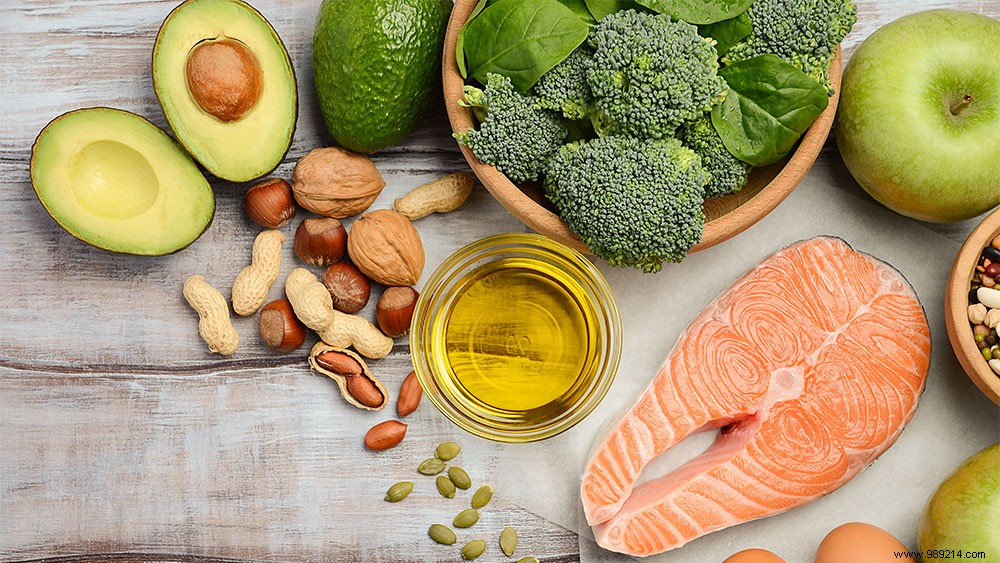
Omega 3 and 6 are essential fatty acids, which your body does not make itself, but which you desperately need. Why is it so important that you get enough of both?
Food with a lot of omega 3 from fish fatty acids reduces the risk of cardiovascular disease. It is sometimes said that it may also help with ADHD, learning disabilities, depression and dementia, but there is no scientific proof yet. Your body also uses fish fatty acids to make body cells. This innovation is important, among other things, to maintain your eyesight and to let your brain do its job properly. If you get too little omega 3, you can get various complaints; sleeping problems, brittle nails, dry eyes, a lot of thirst, frequent urination and mood swings are some of the complaints.
The omega-3 fatty acids found in oily fish are EPA (eicosapentaenoic acid) and DHA (docosahexaenoic acid). These important fatty acids can be made from alpha-linolenic acid (ALA), the essential plant-based omega-3 fatty acid present in flaxseed, hemp, walnut, canola, wheat germ and soybean oils. But because your body converts a maximum of five percent of ALA into EPA and DHA, it is better to get the necessary omega-3 fatty acids from oily fish (salmon, herring, mackerel, sardines, anchovies). How do you make sure you get enough omega 3 (and are fish oil capsules good too)?
The best-known omega-6 fatty acid is linoleic acid, which is found in vegetable oils (such as sunflower oil), but also in margarine, low-fat margarine and frying and frying fats. Omega 6 also lowers the risk of cardiovascular disease. Linoleic acid is also important for the normal growth and development of children. In adults, a deficiency can cause dry, flaky skin.
You probably don't have to worry about omega 6; with the oils and fats we use for preparing food and spreading bread, we eat an average of 14 grams of linoleic acid per day. That is amply more than the 4 grams for women and 6 grams for men recommended by the Health Council. The situation is different for omega 3. According to the Health Council, adults should take 200 milligrams of fish fatty acids daily. You can do this if you eat a portion of oily fish at least once a week. In practice, however, not everyone achieves this. In addition, the Council recommends 2 grams of the vegetable omega-3 fatty acid ALA daily for women and 3 grams for men.
If you search the internet for information about omega 3 and 6, you will soon encounter discussions about 'the right balance'. The question then is whether the ratio between the amount of omega 3 and 6 that you ingest has an influence on your health. The fact is that most people consume much more omega 6 than omega 3. Some nutritionists believe that this can have harmful consequences, for example because an excess of omega-6 fatty acids could promote inflammatory reactions. But according to Prof. Ronald Mensink, professor of molecular nutrition at Maastricht University, there is no convincing scientific evidence for this. “It is also not clear what exactly you should look at when calculating the ideal ratio. For example, do you only include fish fatty acids for omega 3, or do you also include vegetable variants? All in all, this was a reason for the Health Council not to include anything in the guideline on this subject about a possible correct balance between the two. It is more important to ensure that you get enough of omega 3 and 6 separately," says Mensink.
This article previously appeared in the February 2018 issue | Text:Marte van Santen | Image:Shutterstock